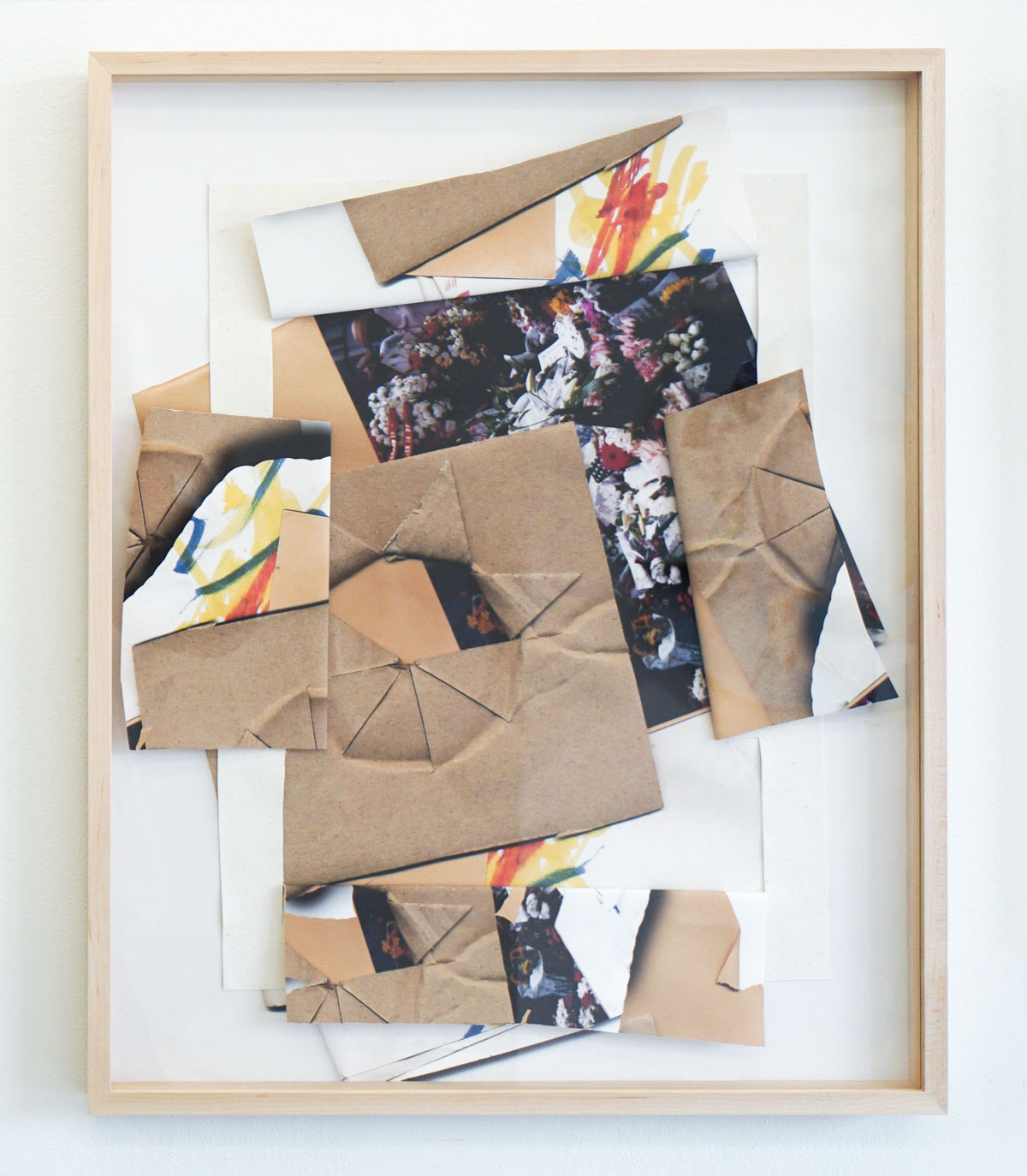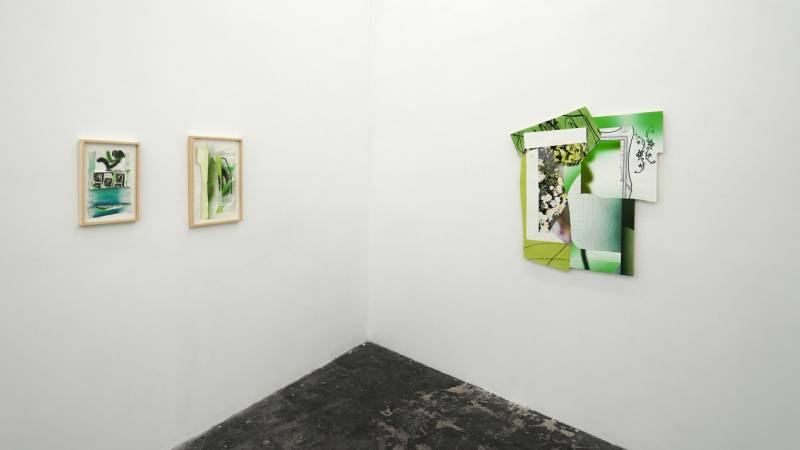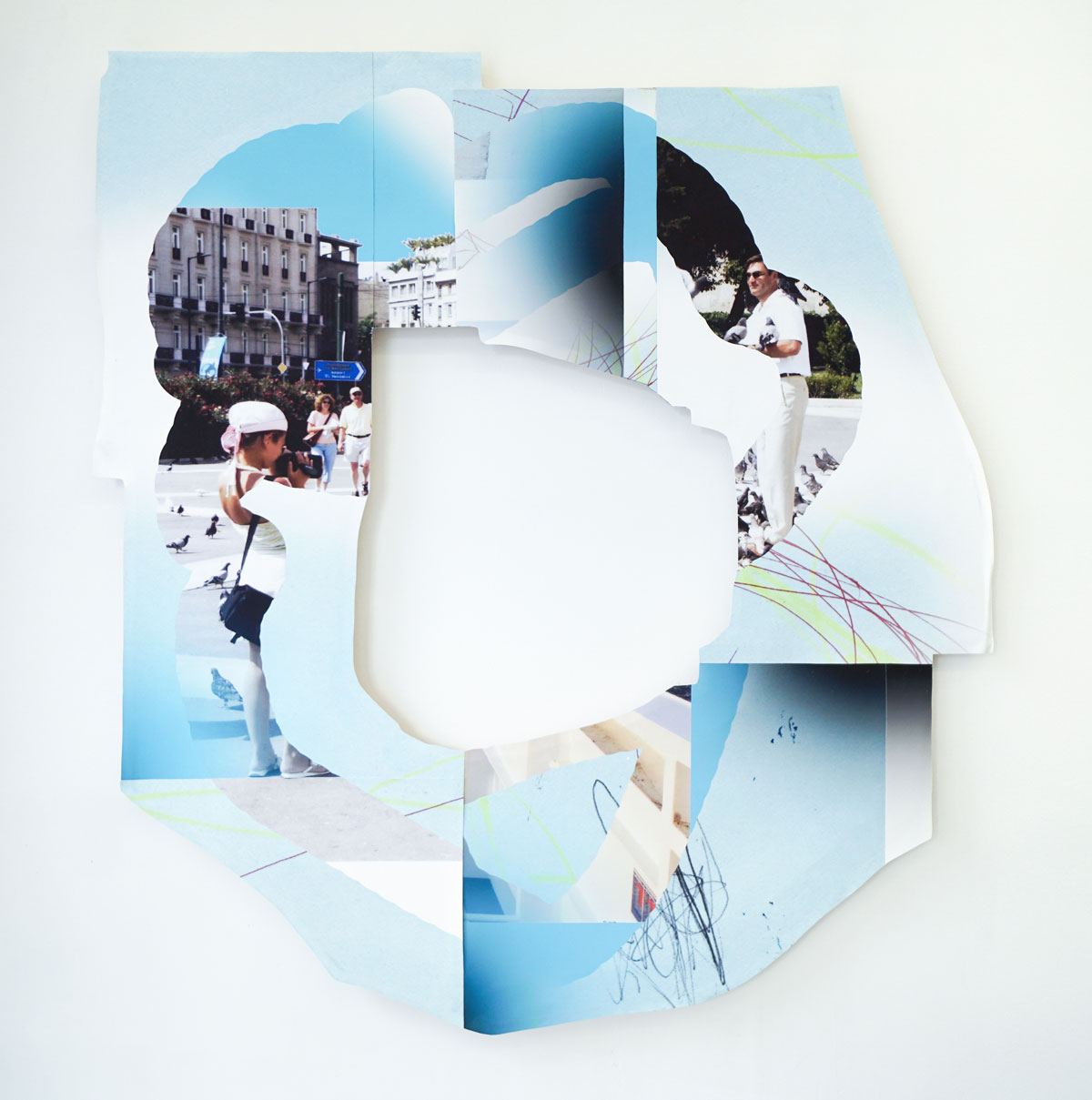Being housebound means being forced to confront the dust under our beds, the things long kept out of sight and out of mind. Somewhere in there is a true thing, Philadelphia-based artist Kate Bonner’s third solo show with Et al. etc., makes monuments out of such nuisances. Scraps of studio detritus, banal photos of flowers and painterly gestures made in Photoshop coalesce in Bonner’s soothing yet anxious compositions on view in the gallery’s Mission Street space.
Bonner’s new body of work, a series of hybridized wall pieces that incorporate painting, photography and collage, alternates between intention and happenstance. Paint applied by brush and digital algorithm is layered above and beneath disparate shapes that resemble the afterimages seen when one finally looks away from a bright light. They are peripheral, like context without subject.
Fit snugly in a wooden frame, the painted collage New rooms hums with an understated beauty. The materials oscillate between physical contingency and digital facsimile. They are amphibious, migrating from the material world to the screen and back again—like many of us with the privileges of social distancing. In Bonner’s works, each sloughed-off border and scrap of a photograph is revered and cherished. But the images of flowers in New rooms (like all images of flowers, or sunsets), are ensconced in a certain sadness. They are pictures of coping; by immortalizing ephemerality, we stave off time from encroaching upon us.

On the other side of the gallery, the series Shifting stories evokes the palette of a domestic landscape in quarantine: an accumulation of discarded packaging, children’s drawings, partially finished projects, and small stacks of papers pertaining to matters of varying importance.
In the exhibition’s accompanying text the artist writes, “These paintings fold in on themselves to protect, they fold back on themselves as they attempt to reconstruct. These paintings guard their own inner reality.” To Bonner, cutouts “betray an inner confusion and chaos,” while layered images “depict second guesses.” Fittingly, the star-shaped folds conjure memories of paper fortune tellers that succinctly relayed our destinies in times when the future felt less tenuous. Shifting stories (v1-v3) deflect any sense of a neatly ordered reality. They indulge entropic anxieties.




